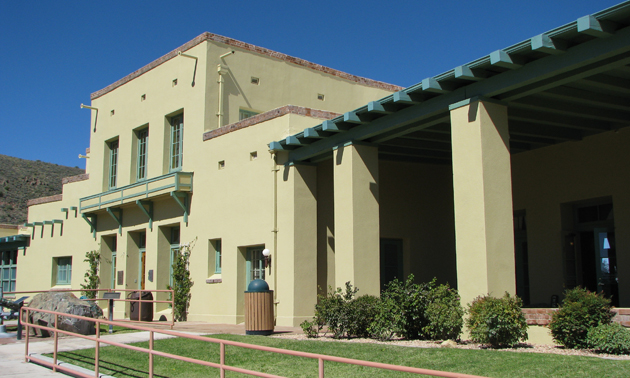A cultural tour of Arizona State Parks
Guided tours are available

The state parks of Arizona are rife with the culture and history of the state, representing the stories of days gone by through an abundance of heritage sites, museums and living histories.
“When you go to a state park, you get the whole story about the community and the area,” said Ellen Bilbrey, chief public information officer for Arizona State Parks. “You get it from everyone’s perspective. It’s great because you get to hear real stories about the areas you’re going to.”
Bilbrey outlined an excellent route for travellers to follow and experience a variety of important topics regarding Arizona’s history.
“You can go to Fort Verde State Historic Park, then from there to Jerome Historic Park—that’ll take you from military history to mining history,” said Bilbrey. “Then you can travel to Riordan Mansion for logging history.”
Fort Verde State Historic Park
Fort Verde is one of the best-preserved military bases in all of Arizona. Still with numerous buildings from the 1800s, it gives visitors many opportunities to explore historical sites, view interpretive exhibits and experience how life was for the everyday soldier at the fort.
“The park is the best-preserved example of an Indian Wars period fort in Arizona,” said Monica Enriquez of Arizona State Parks. “The fort was a base for General Crook’s U.S. Army scouts and soldiers in the 1870s and 1880s. From 1865 to 1891, Camp Lincoln, Camp Verde and Fort Verde were home to officers, doctors, families, enlisted men and scouts.”
There are three historical museums on the site, all inside houses from the 1880s. The interiors are furnished just as they were before the site was abandoned in 1891. If you want to look at uniforms and weapons from the wars of the time, take a look inside the administration building—or see replicas on re-enactors in the living history performances that take place on site.
Jerome State Historic Park
Douglas Mansion, the main building at Jerome State Historic Park, is the former home of the Douglas family—the founders of the mining centre that was one of the substantial building blocks of the town of Jerome.
“(The mansion) is now a museum devoted to the history of the Jerome area and the Douglas family,” said Enriquez. “The museum features photographs, artifacts and minerals in addition to a video presentation and a three-dimensional model of the town with its underground mines.”
When you continue to the outside of the museum, you can find more displays such as the historic Audrey Shaft Headframe, the largest wooden headframe still standing in Arizona. The structure was used between 1918 and 1945 to haul nearly four million tons of ore from Jerome’s Little Daisy Mine to produce copper, silver and gold.
Riordan Mansion State Historic Park
This historical trilogy concludes at Riordan Mansion State Historic Park, an architectural treasure in Flagstaff. The mansion was constructed in 1904 and is a symbol of true luxury for its time period. With a rustic exterior of log-slab siding, volcanic stone arches and hand-split wooden shingles, this historic building is a remarkable example of Arts and Crafts style architecture.
The mansion itself is actually a combination of the two separate homes of Michael and Timothy Riordan, connected by one room in the middle. Each family’s side of the mansion is unique, but complementary to the other’s—combining for a highly interesting glance into their elegant lifestyle in a rustic area.
“Guided tours of the mansion are given daily,” said Enriquez. “Your guide will lead you through a pristine historic home filled with original artifacts, handcrafted furniture and personal mementos of the Riordan families.”






